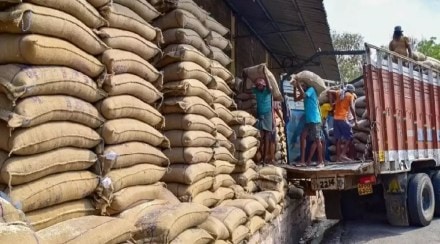The government has sought to allay fears about food shortage and rising prices, saying that India has more than enough grain stock in stores to meet requirements and keep domestic prices stable. It also said the stocks will continue to be higher than needed till April next year, amid worries that erratic season would hit rabi and kharif output, and stoke inflation. India had about 227 LMT (lakh metric tonnes) of wheat and 205 LMT of rice in godowns as on 1 October 2022, which the government said is well above the buffer norms and operational requirements. The stock is more than enough to meet the requirements of National Food Security Act (NFSA) and Prime Minister Garib Kalyan Yojana (PMGKAY), among other government schemes.
Also Read: Petrol and Diesel Price Today, 18 Oct 2022: Fuel prices unchanged; Check rates in Delhi, Mumbai, other cities
Export bans, monsoon, inflation: Journey so far
The statement comes after the CPI inflation data for September 2022, released last week, revealed a 5-month-high rate of 7.41 per cent. Analysts cited high food inflation, registered at 8.6 per cent as against 7.6 per cent in August, as the primary driver that resulted in the bump in the retail inflation print. India restricted export of wheat in May, and banned rice export in September to meet the domestic demands. It also levied a 20 per cent export duty on non-basmati rice. The decision came amid erratic bouts of rainfall in various parts of the country which substantially affected the Kharif output, several analysts had noted.
Gaura Sengupta, Economist, IDFC Bank, said then: “Kharif crop output is estimated to be lower by 3.9 per cent in FY23 owing to an uneven rain distribution in various parts of the country.” Aditi Nayar, Chief Economist, ICRA, had said: “The excessive rainfall in early October 2022 may adversely impact the kharif harvest and delay rabi sowing, thereby posing a material upside risk to the food inflation outlook.” The erratic monsoon followed severe sessions of heat waves that had already made a dent in the Rabi output in the first quarter of this fiscal.
Procurement plans 2022-23 and stock positions as on Oct 1
According to the Ministry of Consumer Affairs, Food & Public Distribution, nearly 58 LMT of kharif crop of paddy has been procured as of October 16, 2022. The government estimated the total procurement of 771 LMT paddy in the current fiscal. It has projected the stock for wheat and rice at 113 LMT and 237 LMT, respectively, as on April 1, 2023, as compared to the buffer requirement of 75 LMT and 136 LMT. The wheat procurement, scheduled to start from April 2023, is expected to remain normal, “on account of fairly good rainfall in the country,” the ministry stated. According to the government’s data, Wheat stock was at 227 LMT, as compared to the buffer requirement of 205 LMT. Meanwhile, rice stock was reported at 205 LMT, against the buffer requirement of 103 LMT.
Food grain prices
The government said that while the price rise in wheat and rice is normal, the stocks procured in the godowns will be used for market intervention in case of an abnormal increase in food grain prices. “A total quantity of 1121 LMT foodgrains has been allocated under PMGKAY with an expected financial outlay of Rs. 3.91 lakh Crore. Such large release of foodgrains coupled with regulation of exports, has ensured that domestic price has largely remained stable compared to international price of these commodities,” it said.
Also Read: Govt’s diwali gift for farmers; MSP for rabi crops hiked; wheat up Rs 110, mustard Rs 400 per quintal
